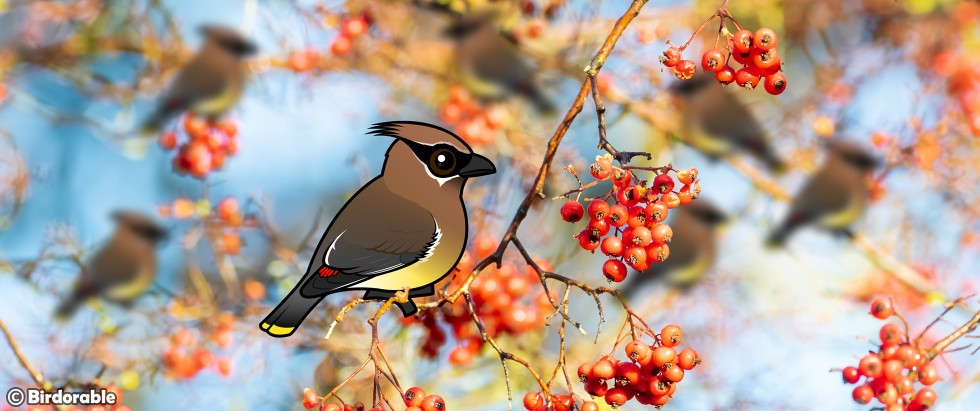From Fruit Fanatics to Wax Tips: Cool Facts about Cedar Waxwings

Cedar Waxwings boast a range of unique features and behaviors that set them apart in the bird world. From their distinctive appearance to their unusual dietary habits, here are some cool facts about the Cedar Waxwing, offering a glimpse into their lives and habits:
- Waxy Red Tips: Cedar Waxwings are named for the distinctive waxy red tips on their secondary feathers, which increase in number and size as they age.
- Fruit Lovers: These birds have a strong preference for fruit and can survive on a fruit-only diet for several months.
- Cowbird Chicks Struggle: Brown-headed Cowbirds that hatch in Cedar Waxwing nests often don't survive due to the high-fruit diet of the Waxwings.
- Intoxicated Behavior: Waxwings can become drunk from eating overripe, fermenting berries, sometimes leading to flocks colliding with windows.
- Unique Vocalization: Cedar Waxwings don't sing traditional songs but communicate with quiet trilling or buzzing sounds.
- Tail Band Coloration: While typically yellow, some Cedar Waxwings developed orange tail bands in the 1960s in the northeastern U.S., a change attributed to non-native honeysuckle berries in their diet.
- Polite Eating Habits: These birds eat in shifts, with one group feeding first before giving way to the next, displaying more courteous behavior than most birds.
- Group Names: A group of waxwings is called an "ear-full" or a "museum" of waxwings.
- Birdorable Feature: The Cedar Waxwing has been a part of the Birdorable collection since September 2006. Check out our cute waxwing t-shirts and gifts!









Comments
Leave a comment
Thank you!